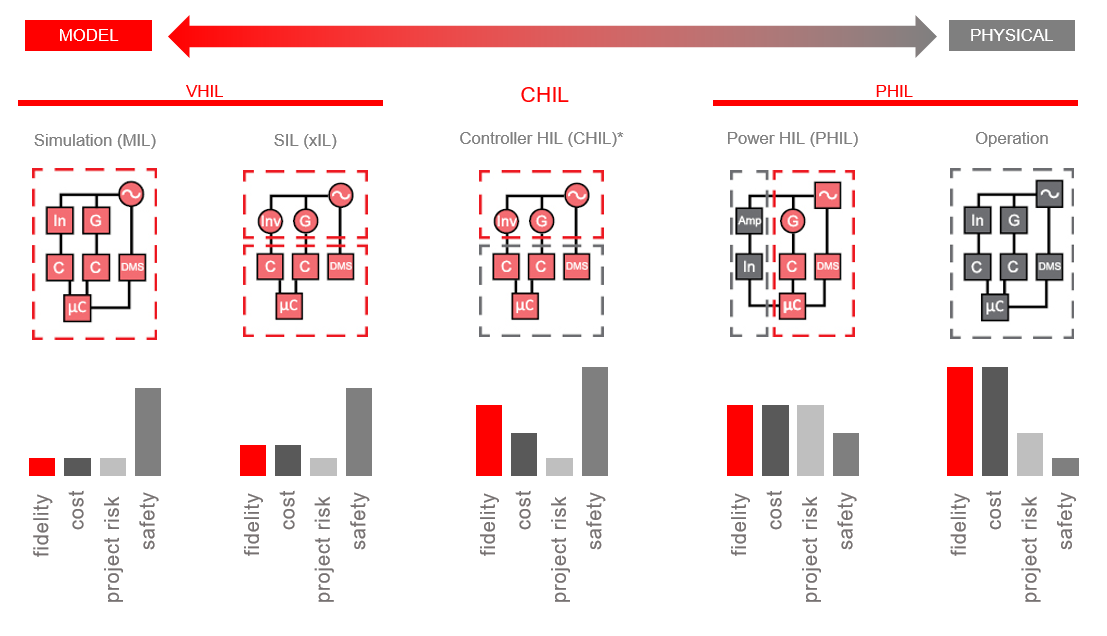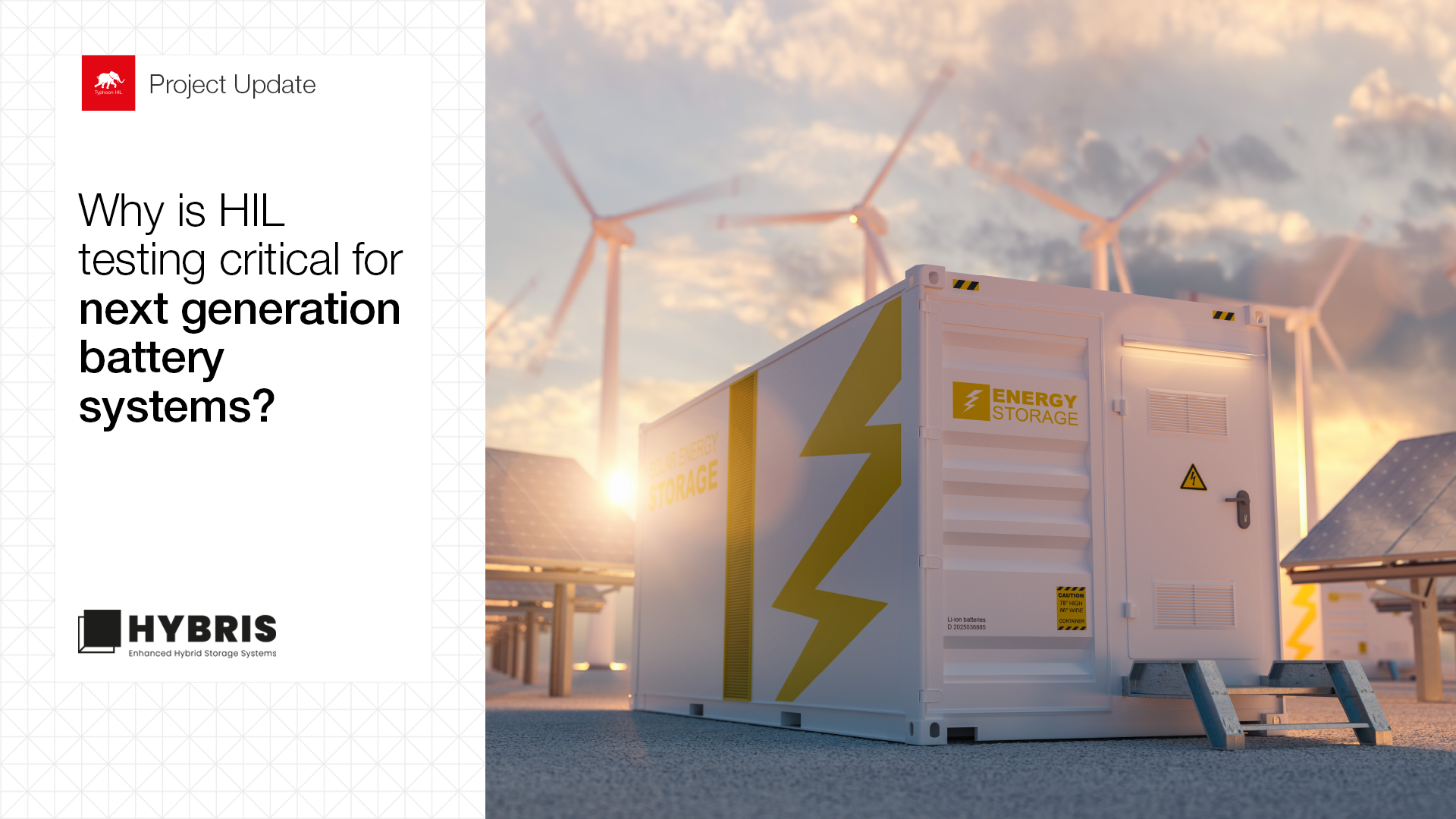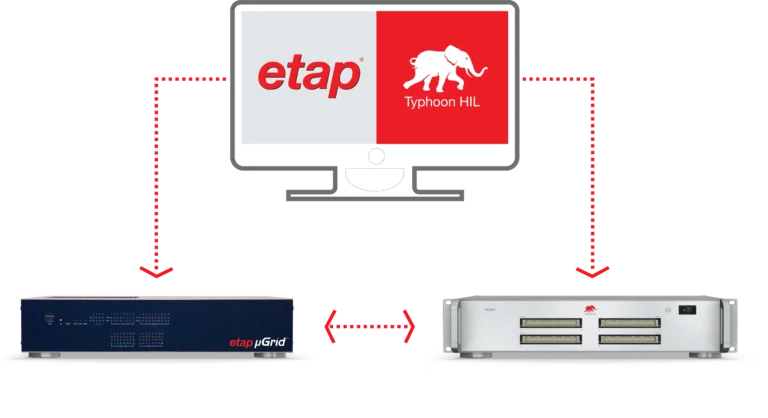Introduction | Why is energy storage control important?
Energy storage is the key to unlocking the existing electricity grid and allowing renewables to generate the bulk of the day-to-day power. Until now, in the vast majority of cases, grid operators have only been using their energy storage solutions as a bolt–on to their existing infrastructure to help smooth out some of the temporary spikes in demand, instead of providing the bulk of everyday electricity provision. Going forward, advanced batteries are expected to play a major role in electricity grid management services for systems with a high share of renewable electricity.
Energy Storage Systems (ESS) aim to provide two basic types of services: power and energy. While most battery systems are optimized to provide one service over another, novel hybrid battery systems, like the HESS being developed in the HYBRIS project, are designed to meet both power and energy service needs. To accomplish this, new methods of controlling battery systems are required, which must be tested to ensure they can be performed safely. Coupling a battery energy storage converter controller with a real-time simulation helps to optimize the design and service offerings in order to comply with certification and standards, such as grid codes, during the initial development phase.
In microgrids, for example, the battery is critical for managing islanding, synchronizing the grid system, and providing the stored energy necessary to meet grid needs. As such, there is a requirement for the ability to island and reconnect seamlessly. This leads to the need to understand fault responses of inverters in power electronics-based resources in grid-connected and islanded modes, which is where hardware-in-the-loop testing comes into its own.
HIL concept | What is HIL testing?
Hardware-in-the-loop testing, or HIL testing, is when real hardware is connected to signals generated by a virtual model of a physical system in real-time. During HIL tests, the hardware device under test, or DUT, “believes” it is operating in the real system since it receives the same types of signals at the same speed and the same power levels as it would in a real installation. By manipulating the virtual system model during testing, we can validate that the DUT behaves as expected during both normal operating conditions as well as during rare events, such as grid faults or reverse power flow conditions.

Commonly, HIL testing is divided into two types: Power hardware-in-the-loop (P-HIL) and controller hardware-in-the-loop (C-HIL), corresponding to the right and center of Figure 1. Power hardware-in-the-loop involves testing the real device, such as a battery, connected to power amplifiers that ensure it receives the same power levels it would face under real conditions. This is ideal for the final validation of a new system, but can be quite expensive and poses safety risks since real power is used.

Controller hardware-in-the-loop instead replaces the complete power stage of the DUT with a virtual model, as shown in Figure 2. Real power flows are replaced with digital signals in the power stage model, which the controller interprets and then sends control signals to. In this way, control software behavior can be tested in real-time with microsecond or even nanosecond level resolution. This technique is the gold standard for developing, validating, and troubleshooting complex control, protection, and monitoring systems, as it allows you to test real controllers in real conditions without the safety risks posed by high power flows.
HIL benefits | Why HIL?
Electrical systems must always be in balance – a sufficiently severe spike in power demand over even a microsecond can be enough to catastrophically damage costly equipment. With the Hardware-in-the-Loop Testing concept, these technical and commercial problems can be solved much more efficiently. While simplified models can play a key role in quickly finding potential designs for battery systems, the real-time testing that HIL provides is critical for ensuring that there isn’t a moment where these systems will fail under the tested conditions. Within the HYBRIS Project, this is particularly useful for ensuring the converter controller signals don’t damage the real battery system, reducing the risk of damaging the prototype battery during development.
HIL can also be useful as a communication tool between equipment manufacturers, product integrators, solution development partners, and final customers. The real-time simulation environment used during HIL tests can help analyze and demonstrate constraints on safe settings for the electronics, without damaging any part of the test bench. HIL technology can therefore provide a high-fidelity simulation of a wide range of failures, verifying that the control software behaves accordingly. This means the right components can be chosen, sized, integrated, and the control software for them tested and verified. In HYBRIS, HIL testing of the battery control system utilizing high-fidelity virtual models of both the battery system and the grid allows us to parameterize and size the HESS battery system to best fit the conditions at a real pilot site.
Finally, HIL testing can satisfy the “digital twin” concept provided the real-time models in the simulation environment are sufficiently high-fidelity that they are essentially indistinguishable from a real system. Creating real-time models with this level of fidelity requires capturing everything from the configuration of the devices used at the site to the communication protocols and communication delays that interact between them. The HYBRIS project seeks to build on this concept by feeding real data from a real site into a high-fidelity HiL model to essentially create a virtual demonstration site.
Credits
Text | Sergio Costa, Eleni Apostoloidou
Visuals | Dragan Zuber, Karl Mickei
Editor | Debora Santo
Acknowledgments | This blog was originally created and posted as part of the Horizon 2020 HYBRIS project. You can find the original article here. To find out more about Typhoon HIL’s funded research activities, check out our Funded Research page.

This project has received funding from the European Union’s Horizon 2020 research and innovation program under grant agreement No 963652.




6 comments on “Why is HIL Testing Critical for Next Generation Battery Systems?”
I’m impressed, I have to admit. Rarely do I come across a blog that’s equally
educational and amusing, and let me tell you, you have hit the nail on the head.
The problem is something that not enough people are speaking intelligently about.
I’m very happy I stumbled across this in my hunt for something regarding this.
I do not even know how I ended up here, but I thought this
post was great. I don’t know who you are but certainly you’re going to
a famous blogger if you are not already 😉 Cheers!
Good post. I certainly love this website. Keep it up!
I blog often and I really thank you for your content.
This article has truly peaked my interest.
I will tak a note of your blog and krep checking for
new information about once per week. I subscribed to
your Feed too.
Having read this I thought it was extremely enlightening.
I appreciate you finding the time and effort to put this article together.
I once again find myself personally spending a significant amount of time both reading and leaving comments.
Excellent, what a webpage it is! This webpage gives helpful facts to us, keep it up.